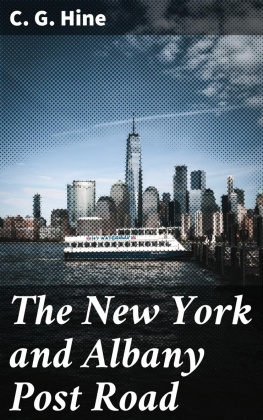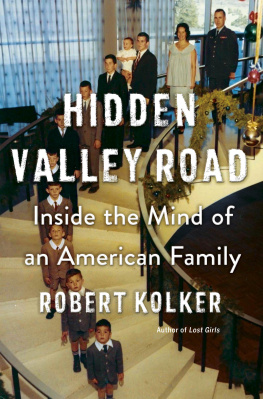

Published by The History Press
Charleston, SC 29403
www.historypress.net
Copyright 2012 by Carney Rhinevault
All rights reserved
Cover image: Double Arch Bridge on Croton Aqueduct at Ossining, circa 1890. Painting by Tatiana Rhinevault.
First published 2012
e-book edition 2012
Manufactured in the United States
ISBN 978.1.61423.822.5
Library of Congress CIP data applied for.
print edition ISBN 978.1.60949.654.8
Notice: The information in this book is true and complete to the best of our knowledge. It is offered without guarantee on the part of the author or The History Press. The author and The History Press disclaim all liability in connection with the use of this book.
All rights reserved. No part of this book may be reproduced or transmitted in any form whatsoever without prior written permission from the publisher except in the case of brief quotations embodied in critical articles and reviews.
Contents
Chapter 1
The Philipse Family of Yonkers and Sleepy Hollow
There is a twenty-five-mile stretch of the Post Road from the Harlem River to the Croton River in Westchester County that was once owned by one family, the Philipses. Starting with a large purchase in 1672, Frederick Philipse I began to build an estate, which eventually totaled fifty-seven thousand acres. The Manor of Philipseburg, with its tenant farmers and two giant gristmills at Yonkers and North Tarrytown, made Philipse and his descendants the richest family in New York Colony. In 1685, the manor was bordered by the Croton River on the north, the Bronx River on the east, the Hudson River on the west and the Nepperhan (Sawmill) River on the south. In 1694, the estate boundary on the south moved to the Spuyten Duyuil Creek after another large purchase. However, after all the acquisitions over a 113-year period, the family lost everything because the fourth generation of Philipses chose the wrong side in the Revolutionary War and was forced to escape to England.
FREDERICK PHILIPSE I
As a young man of twenty-one, Frederick Philipse I (16261702) sailed with his parents to the New World in 1647, probably on the same ship as the fourth director-general of Nieuw Nederlandts, Petrus Stuyvesant. He soon was the official carpenter and architect of the director-general and became wealthy by trading the raw materials (mostly beaver pelts) of the Dutch colony for finished products from Europe. More than trade enriched Frederick, however. In October 1662, he had the good sense to marry a widow, Margaret Hardenbroeck (16381691), who was richer than he was. Margaret brought to the marriage valuable house lots in Manhattan and Bergen, New Jersey, and the merchant ships New Netherland Indian, Beaver, Pearl and Morning Star. She also contributed more than wealth; she was smart and aggressive, and she soon became the real head of the Philipse empire.
Two years after his marriage to Margaret, in 1664, a British fleet sailed into Nieuw Amsterdam Harbor and simply took over the colony in a bloodless coup. Frederick saw no use in fighting the British and pledged his loyalty to the new government, and he was allowed to continue his businesses as if the Dutch authorities were still in charge. He was not only engaged in merchant trade and land ownership, but he also began the unusual business of manufacturing wampum beads, which were the native Indian form of currency. Within ten years of the British takeover, his wealth had increased 400 percent, and he was officially declared the wealthiest man in New York Colony. By 1679, he owned twenty-four merchant ships, which sailed to British ports all over the world.
SUGAR, SLAVES AND PIRATES
Frederick and Margaret could see that the beaver supply was diminishing, while their fleet of merchant ships continued to growa problem that required a change of business strategy. By 1674, sugar plantations had expanded on the island of Barbados in the Caribbean, and the Philipses began the triangle trade of food stuffs from New York to Barbados, sugar from Barbados to England and manufactured goods from England to New York. Later, in 1684, a fourth port of call was added: Angola, on the West African coast. There, the Philipse ship Charles loaded 146 black prisoners for the voyage of misery to Barbados. On this first venture in human trade, which took approximately two months, 18 slaves died and were thrown overboard as food for the sharks. Fourteen blacks died in Barbados, but 105 people were sold at auction, netting the Philipses a tremendous profit. The sugar farmers on the island needed a steady supply of laborers, and the Philipses were willing to fill the need. Most slaves would be worked to death or died of new diseases within two years of their arrival.
From the original cargo of the Charles, there were nine slaves still on board for one reason or another. So the Charles set sail again for America and arrived a month later. To avoid custom duties on the slaves, they were disembarked at Westchester County and were put to work at the Philipse Upper Mills in the present-day town of Tarrytown, where the Pocantico River empties into the Hudson River. Thus the Philipse family advanced from slave trading to slave owning.
When Fredericks sons Adolph and Philip grew to become young men, they engaged in the risky business of privateering. In 1690, the New York governor hired them to raid French ships along the Long Island coast. It wasnt always easy to identify the prey, so sometimes a privateer would raid the wrong ship from the wrong country and become a pirate. If Fredericks secret ledgers were anything like the books of other New York merchants of the time, roughly one-third of his business would have been illegal.
Frederick I became embroiled with another famous pirate, Captain William Kidd. It all started innocently enough in 1696 when Frederick I was approached by Robert Livingston about a business deal. Livingston proposed that, with Philipses help, he
would fit out a vessel and capture and destroy pirates (along the American coast) and sell the captured cargoes for the benefit of those fitting out the vessel. Lord Bellomont (the governor of New York) approved the scheme and became one of the associates;and it was whispered that the king was interested in the enterprise. Livingston recommended Captain William Kidd as the commander, and the vessel was fitted out and started on the famous cruise which brought Kidd to the gallows in 1701 and disgrace to his backers.
Naturally, each of the backers blamed the others. Lord Bellomont remarked that: If the coffers of Frederick Philipse were searched, Captain Kidds missing treasures could easily be found.
MARRIAGES FOR MONEY
As evidenced by the slave trading, privateering, smuggling and evading of custom duties, the Philipses businesses were not built on ethical or moral principles. Neither was their private life. Frederick I and Margaret married for money, and in 1692, one year after Margaret died, sixty-six-year-old Frederick again married a rich widow, Catherine Van Cortlandt Dervall, who was twenty-six years younger than him. Catherines dead husband was John Dervall, also a successful merchant. Catherines brother, Jacobus, had married Fredericks stepdaughter, Eva, one year earlier. As the saying goes, money marries money. Later generations would see a Beekman, a Robinson and a Morris (all from rich families) marry into the Philipse family.
Next page











